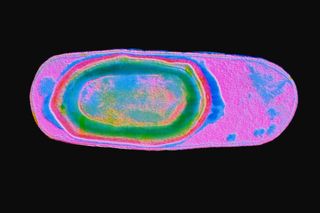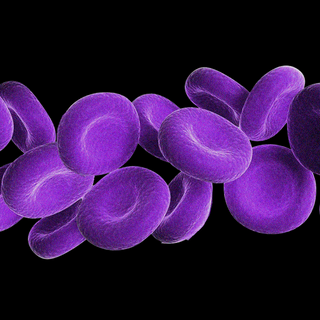
How Dormant Bacteria Spores ‘Return to Life’
“If scientists find life on Mars or Venus, it is likely to be in a dormant state and we now know that a life form that appears to be completely inert may still be capable of thinking about its next steps.”

Here is the stuff of sci-fi nightmares: we’ve found signs alien life, and it looks dead. But is it?
Learning from bacteria can help us prepare for such a possibility. There’s a nearly undead state bacteria can exist in: hibernating through harsh conditions, only to “wake up” again. This ability could be the missing piece of the puzzle not only while dealing with biological threats here on Earth, but also in our search for extraterrestrial life.
In a new study published yesterday in the journal Science, scientists explore how dormant bacterial endospores spring back to life. It helps us understand what dormancy is to life, and raises questions about the limbo between life and death. The main question at hand is: how do bacteria in a state of dormancy “know” when it’s time to wake up?
Several species of bacteria are known to reduce themselves to dormant, tough, spore-like structures to survive harsh conditions. Often triggered by a lack of enough nutrition, as endospores bacteria are protected from extreme heat, pressure, and even outer space. Known to be highly dehydrated structures, endospores may even survive for hundreds of thousands of years and can reactivate themselves as bacteria when environmental conditions become favorable again.
However, while we knew that bacteria could change into endospores and back again depending on their surrounding environment, they remained in the dark as to how the process actually took place. No metabolism takes place in the endospores, hence technically they are physiologically dead. How they manage to monitor their environment in such a condition piqued the researchers’ curiosity, and they set out with their experiment to find out exactly what led to the revival of spores to bacteria.
For their research, the scientists studied tens of thousands of spores of Bacillus subtilis, a bacteria known to be non-harmful to humans. There is also documentation of these spores being found in outer space, which makes them a perfect entry for the experiment. The scientists sent short, 3-minute pulses of an L-alanine amino acid, a nutrient for which Bacillus subtilis is known to have receptors. The scientists tried to observe if the spores would respond in any way to these pulses.
Related on The Swaddle:
Scientists Discover Bacteria That Eats Toxic Plastic
The pulses were deliberately kept short to ensure they weren’t strong enough to trigger a spore’s return to life as bacteria. The scientists observed that over time, as the pulses cumulated, the bacteria switched back to life, almost as if it were keeping score of the number of signals it received. While around 5% of the spores reached the “germination stage” — the stage where spores begin rehydrating to start their transition back to bacteria — on the first signal, almost half of the remaining spores attained germination on the second signal.
But how are spores — dormant cells where metabolism does not take place — able to germinate without any production of energy? Turns out it’s a little like a capacitor in a circuit: the spores released the energy they’d already had stored in them in the form of potassium ions, with each receiving a pulse from the L-alanine amino acid. When enough of their stored energy is used, with an increasing number of pulse signals, the spores decide to germinate to begin reviving their metabolic processes.
The researchers identified this as the presence of a decision-making process in the physiologically dormant cells. In a press release, Gürol Süel, one of the researchers on the study, commented that “the way spores process information is similar to how neurons operate in our brain,” adding that, “In both bacteria and neurons, small and short inputs are added up over time to determine if a threshold is reached. Upon reaching the threshold spores initiate their return to life, while neurons fire an action potential to communicate with other neurons.”
The study, as Süel describes it, “show(s) that cells in a deeply dormant state have the ability to process information… that spores can release their stored electrochemical potential energy to perform a computation about their environment without the need for metabolic activity,”. Understanding how dormant spores operate can be crucial in devising alternative ways of dealing with some pathogenic spores, such as anthrax, which is frequently used as a bioweapon.
The scientists also speculate that the spores can provide a larger framework to think of extraterrestrial life. “If scientists find life on Mars or Venus, it is likely to be in a dormant state and we now know that a life form that appears to be completely inert may still be capable of thinking about its next steps,” Süel says.
Amlan Sarkar is a staff writer at TheSwaddle. He writes about the intersection between pop culture and politics. You can reach him on Instagram @amlansarkr.
Related


Researchers Identify a New, Rare Blood Type
